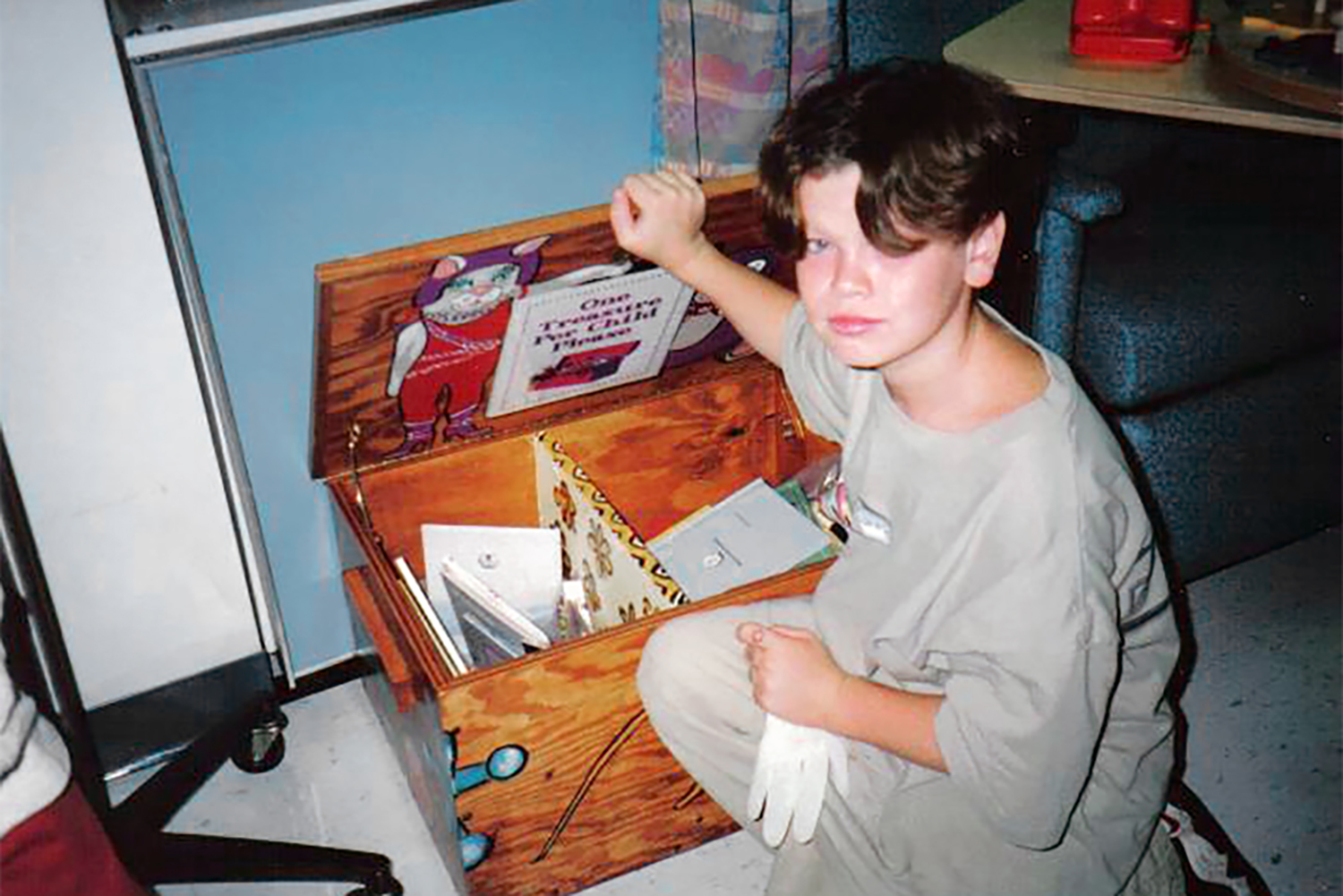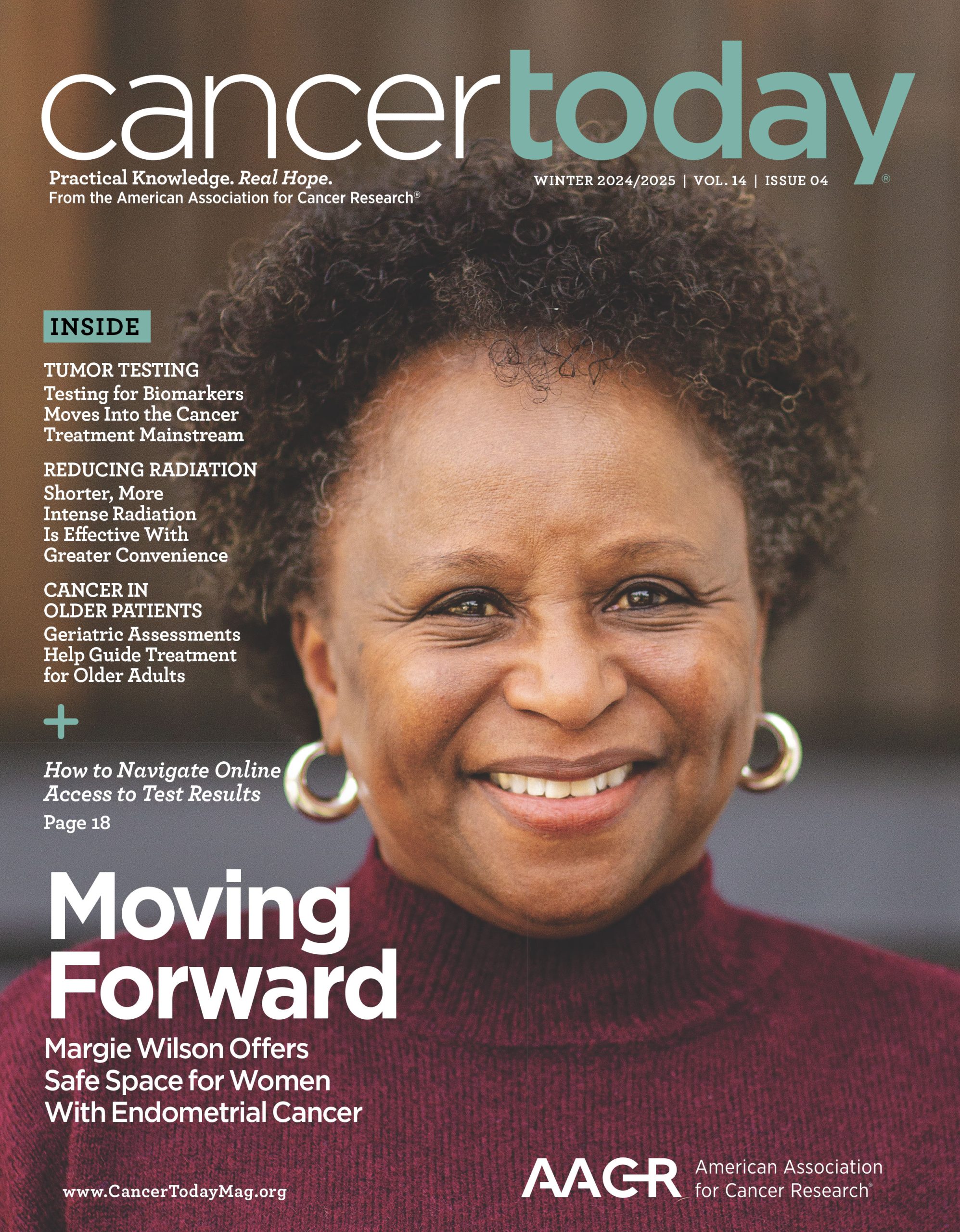COLLEEN KISEL’S SON would always hide when he knew his mom was taking him to the hospital. Martin, who was diagnosed with acute lymphoblastic leukemia in 1993, had figured out that another hospital visit meant more chemotherapy, and the 7-year-old began dreading the trips. To motivate him to get through his infusions, Kisel wrapped small presents and put them in the trunk of her car. Martin opened one after each appointment.
As Kisel continued to take her son to Advocate Children’s Hospital in Oak Lawn, Illinois, she realized the other children awaiting treatment also could use extra encouragement. Shortly after Martin completed treatment in 1996, Kisel set up a toy chest at the hospital so all the children there could receive a gift after their appointments.

Colleen Kisel’s son, Martin, kneels in front of the Pediatric Oncology Treasure Chest Foundation’s first treasure chest at Advocate Children’s Hospital in Oak Lawn, Illinois, in 1997. Kisel started the foundation to offer gifts to children receiving cancer treatment. Photo courtesy of the Pediatric Oncology Treasure Chest Foundation
When selecting a gift for a child with cancer, consider the person’s age. Building sets, dolls, jewelry and toy cars make great gifts for younger children, while teenagers like card games and gift cards, according to Kendra Connor, executive director of the Pediatric Oncology Treasure Chest Foundation. Avoid stuffed animals; they can be difficult to keep clean, which can be a concern for immunocompromised children.
Nearly 30 years later, the Pediatric Oncology Treasure Chest Foundation stocks 55 treasure chests at facilities across 22 states and the District of Columbia. At its headquarters in Orland Park, Illinois, the nonprofit collects toys and other gifts via local drives and through donations from individuals and corporations across the country. The foundation ships toys, games and gift cards to participating medical centers, where cancer patients up to age 18 can select an item from the treasure chest at the end of each visit. “On those hard days, it’s just a motivation for the kid,” says Kendra Connor, the foundation’s executive director.
These suggestions can help ensure your toy drive is a success.
Running a toy drive is much easier than most people think, says Kendra Connor, executive director of the Pediatric Oncology Treasure Chest Foundation. She offers the following tips to ensure success:
- Get the word out via social media and with flyers that provide as much information as possible.
- Run a toy drive for no more than two weeks so people don’t delay donating.
- Don’t be afraid to solicit donations. “People want to help kids with cancer, so it’s an easy ask,” Connor says.
Connor says parents often express their gratitude, noting that the joy of picking out a new toy allows their child to momentarily forget about treatment. “We are doing whatever we can to make sure that those kids have some semblance of childhood,” she says.




